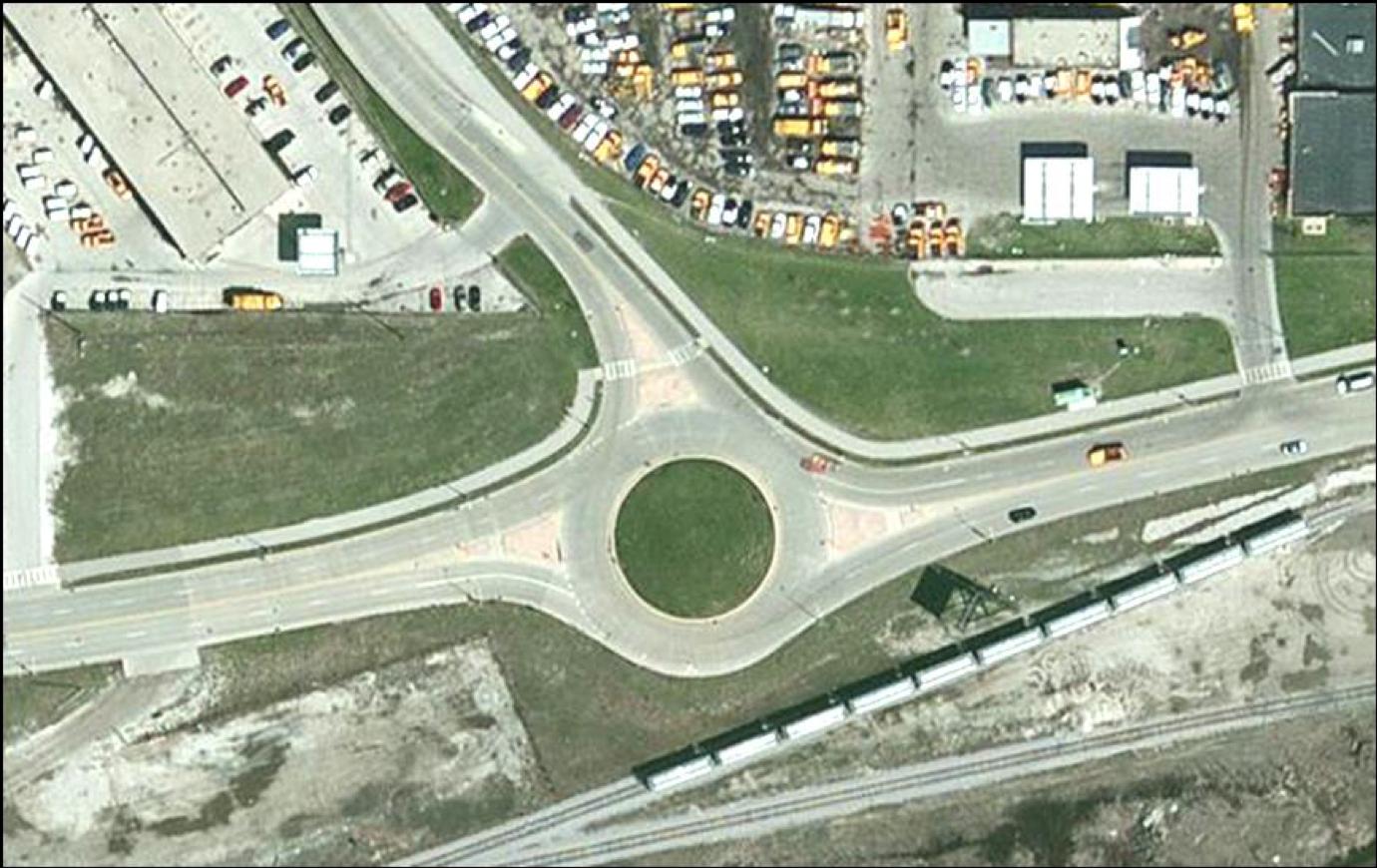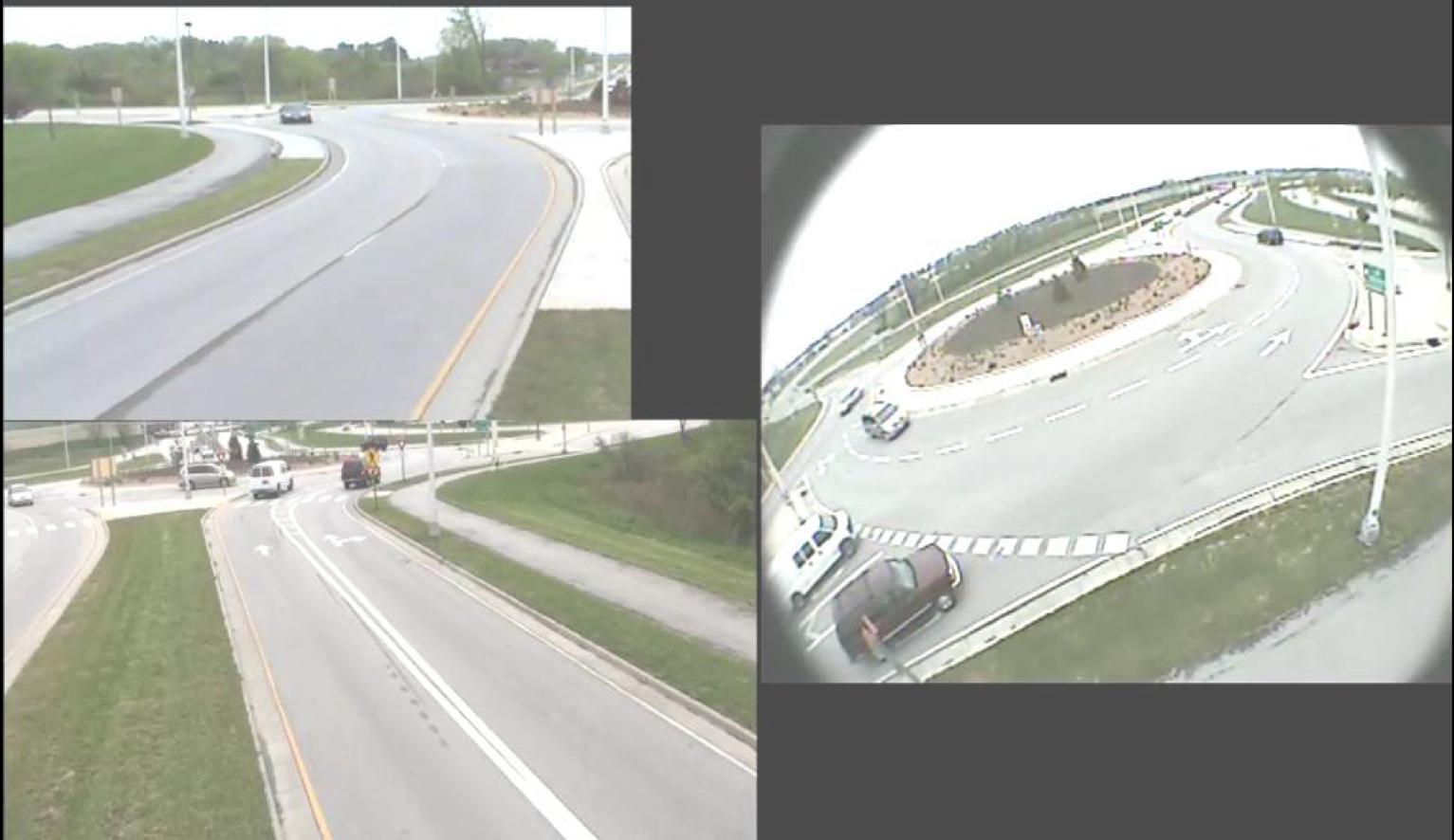Researchers: David Noyce (PI), Andrea Bill, Madhav Chitturi
Primary Project Objectives
Large rotary intersections used in the early U.S. transportation system, where circulating traffic yields, were shown to be problematic and have paved the way for compact modern roundabouts, where entering traffic yields to circulating traffic, to provide safer and more efficient operations. Understanding traffic operations, such as capacity, has been an active area of research in order to better understand how roundabouts fit into the transportation system. Interest continues to increase in how roundabouts can most effectively be used in the United States transportation system to achieve goals of safety, efficiency, along with other benefits.

Using the right software can enhance accuracy and productivity in designing for these goals. However, a growing number of software choices and evolving features provide the motivation for this research because many questions exist about which software is the best option. This research explores the popular models and software available for analyzing roundabout capacity in order to increase understanding of the similarities and differences. Performance measures of delay, queue, volume to capacity (v/c) ratio, and level of service (LOS) were obtained from each software package for each of the roundabouts. Specifically, two roundabouts, one single-lane and one multi-lane, that experienced congestion were compared using capacity models and results from several software packages were analyzed.
